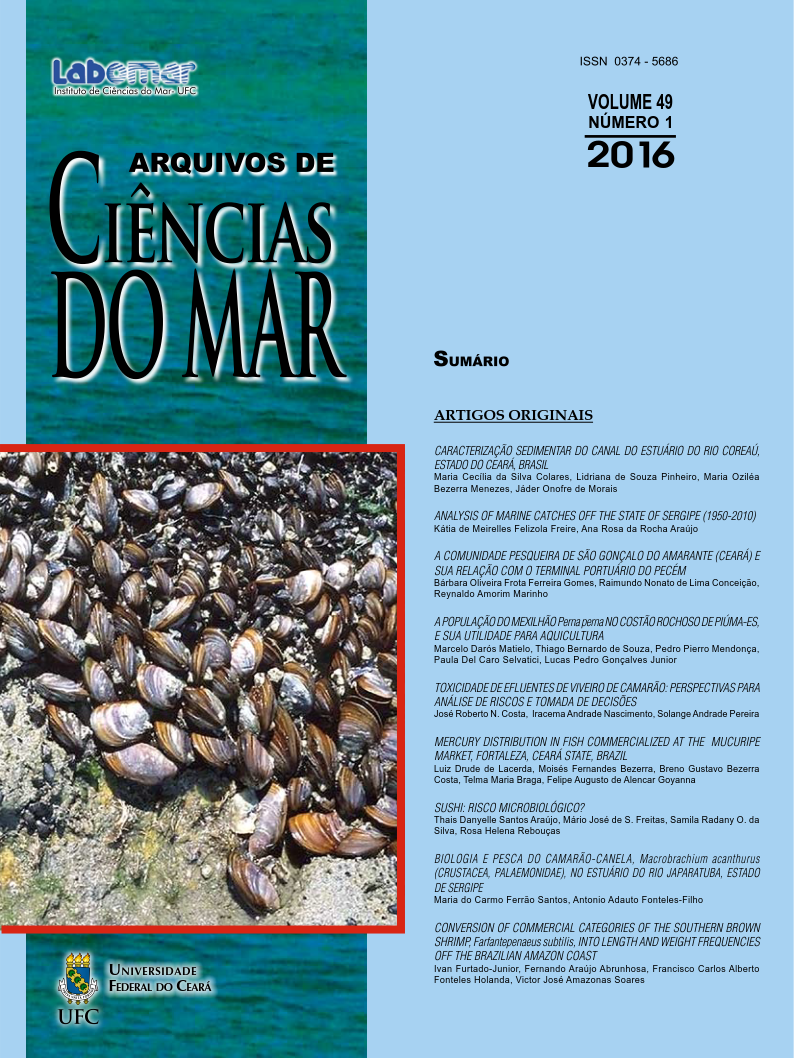MERCURY DISTRIBUTION IN FISH COMMERCIALIZED AT THE MUCURIPE MARKET, FORTALEZA, CEARÁ STATE, BRAZIL
DOI:
https://doi.org/10.32360/acmar.v49i1.6159Palabras clave:
fish market, mercury, human exposureResumen
Average total Hg concentrations measured in fish muscle from species commercialized in the Fortaleza Market, CE, Brazil varied from 14 to 509 ng.g -1 wet weight. Lowest concentrations occurred in small omnivorous fish and the highest in large carnivorous species, in particular sharks. The largest individuals (>110 cm in length) of the piscivorous species Scomberomorus cavalla showed Hg concentrations of up to 1,737 ng.g -1 , although the average concentration for this species was much lower (352 ng.g -1 ). With the exception of the S. cavalla largest individuals, all species presented Hg concentrations below the Brazilian legal limits for human consumption. Hazard quotients (HQ) estimated using the local fish consumption rate and the observed Hg concentrations varied from 0.015 based on small omnivorous species to 0.551 in sharks. All species average HQ was 0.148 and the average HQ based on the most consumed species only was slightly higher (0.155). Both average HQs suggest insignificant exposure risk to consumers.
Descargas
Publicado
Número
Sección
Licencia
1. Proposta de Política para Periódicos de Acesso Livre
Autores que publicam nesta revista concordam com os seguintes termos:
- Autores mantém os direitos autorais e concedem à revista o direito de primeira publicação, com o trabalho simultaneamente licenciado sob a Licença Creative Commons Attribution que permite o compartilhamento do trabalho com reconhecimento da autoria e publicação inicial nesta revista.
- Autores têm autorização para assumir contratos adicionais separadamente, para distribuição não-exclusiva da versão do trabalho publicada nesta revista (ex.: publicar em repositório institucional ou como capítulo de livro), com reconhecimento de autoria e publicação inicial nesta revista.
- Autores têm permissão e são estimulados a publicar e distribuir seu trabalho online (ex.: em repositórios institucionais ou na sua página pessoal) a qualquer ponto antes ou durante o processo editorial, já que isso pode gerar alterações produtivas, bem como aumentar o impacto e a citação do trabalho publicado (Veja O Efeito do Acesso Livre).

